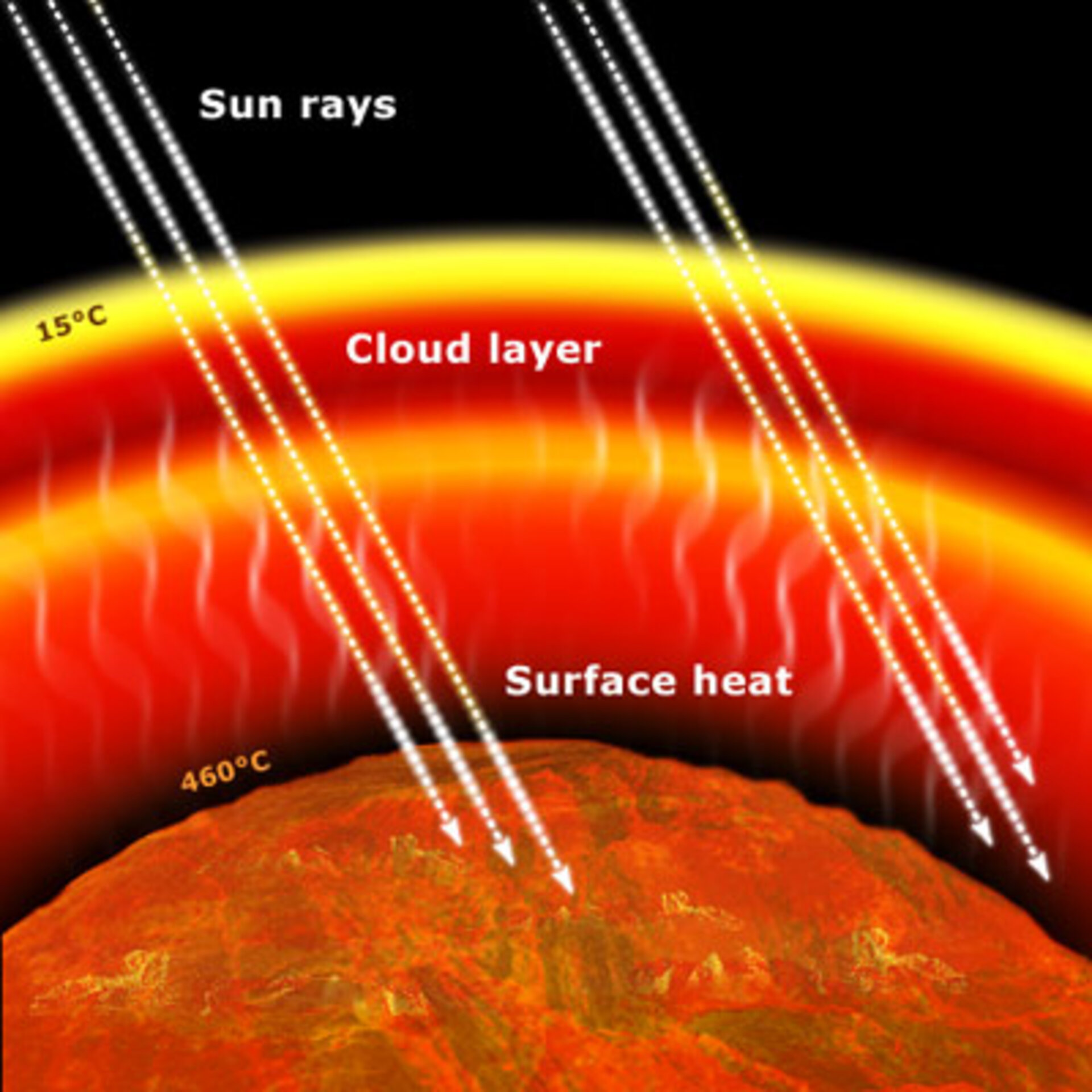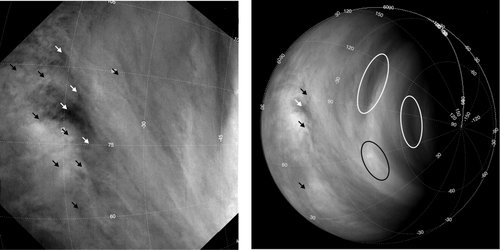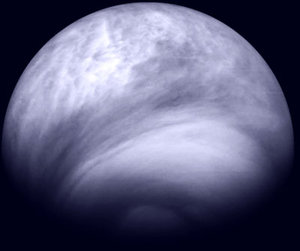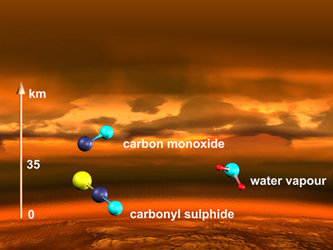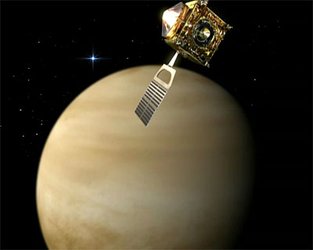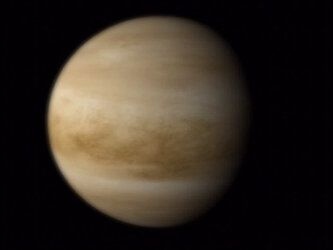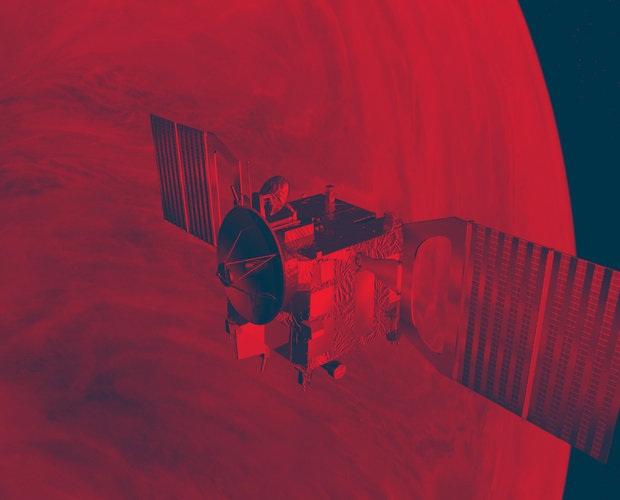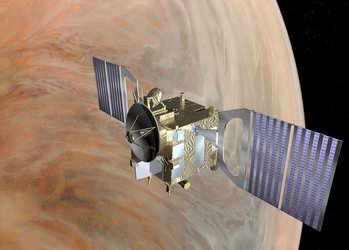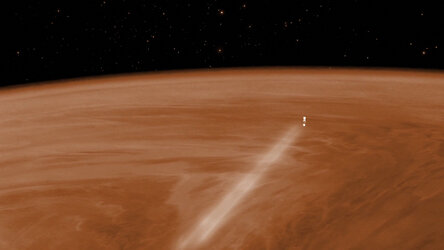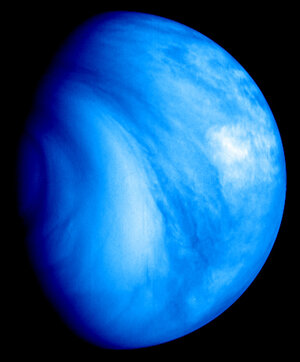Greenhouse effect, clouds and winds
On the global scale, Venus’s climate is strongly driven by the most powerful greenhouse effect found in the Solar System. The greenhouse agents sustaining it are water vapour, carbon dioxide and sulphuric acid aerosols.
About 80% of the incoming solar radiation is reflected back to space by the cloud layer, about 10% is absorbed by the atmosphere and only 10% manages to get through it and heat the surface. However, the thermal radiation emitted by the surface gets trapped by the same atmosphere. The result is an amazing 500 °C difference between the surface and cloud-top temperatures.
Are there other gases sustaining such an efficient planetary greenhouse? How is the heat transported from the surface to the cloud layer: through radiation or dynamic mechanisms such as turbulence?
Mysterious ultraviolet markings on the clouds
Looking at Venus’s thick cloud layer in visible wavelengths would not reveal much. However, by looking at the clouds in other wavelengths, like infrared and ultraviolet light, a very different world appears.
The clouds on Venus are very inhomogeneous in all directions. This is possibly due the formation of enormous cumulus-type clouds.
Furthermore, the upper clouds are marked by areas visible in the ultraviolet light that mysteriously absorb half of the whole solar energy received by the planet.
What is the origin of these ultraviolet markings? What makes their absorption power so high?
Hurricane winds and huge atmospheric vortexes
The lower atmosphere of Venus has a dramatic and peculiar behaviour. At the level of the cloud tops, the atmosphere rotates at a formidable velocity, with wind speeds up to 360 kilometres per hour.
The speed of the winds then progressively decreases to almost zero at the planet surface, where it becomes a gentle breeze, only able to raise dust. What mechanisms cause this ‘zonal super-rotation’?
Furthermore, two enormous vortices, with very complex shapes and behaviours, rotate vertically over the poles, recycling the atmosphere downwards. The vortex at the north pole, the only one previously observed in some detail, has a peculiar double ‘eye’ shape, surrounded by a collar of cool air. It completes a full rotation in only three Earth days.
How are the super-rotation and the polar vortices linked? How does the global atmospheric circulation on Venus work? No model is able to simulate so far the dynamics of the atmosphere of Venus as too few data are available.















 Germany
Germany
 Austria
Austria
 Belgium
Belgium
 Denmark
Denmark
 Spain
Spain
 Estonia
Estonia
 Finland
Finland
 France
France
 Greece
Greece
 Hungary
Hungary
 Ireland
Ireland
 Italy
Italy
 Luxembourg
Luxembourg
 Norway
Norway
 The Netherlands
The Netherlands
 Poland
Poland
 Portugal
Portugal
 Czechia
Czechia
 Romania
Romania
 United Kingdom
United Kingdom
 Slovenia
Slovenia
 Sweden
Sweden
 Switzerland
Switzerland


























